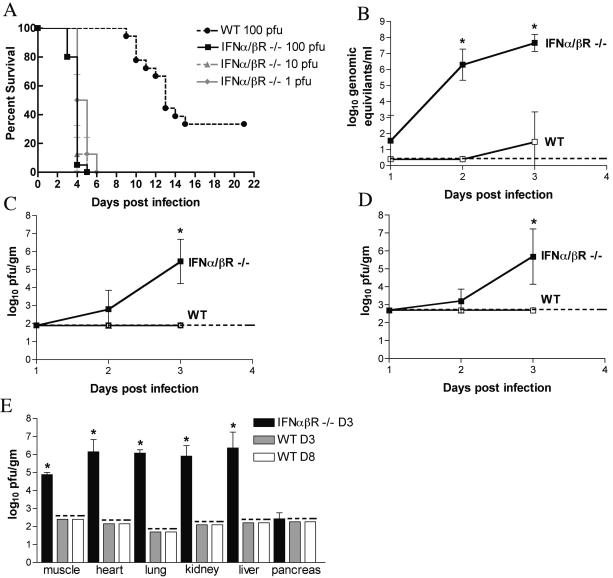FIG. 2.
Survival and virologic analysis of wild-type and IFN-αβR−/− 129Sv/Ev mice. (A) Eight- to 10-week-old mice were inoculated with 100 to 102 PFU of WNV by footpad injection and followed for 21 days. The survival curves were constructed using data from two to three independent experiments. The numbers of animals were as follows: 18 wild-type mice and 20 IFN-α/βR−/− mice infected with 102 PFU and 8 IFN-α/βR−/− mice infected with 101 and 100 PFU. Survival differences between wild-type and IFN-α/βR−/− mice were statistically significant at all viral doses (P < 0.001). (B to E) Viral burden after WNV infection. WNV RNA levels in the serum (B) and viral loads in the brain (C) and spinal cord (D) were determined from samples harvested on days 1, 2, and 3 p.i. with 102 PFU by quantitative RT-PCR or by plaque assay. (E) Viral burden in muscle, heart, lung, kidney, liver, and pancreas was determined on day 3 after infection for IFN-α/βR−/− mice and on days 3 and 8 for wild-type mice. Data are shown as the average PFU per gram of tissue and reflect four to eight mice per group. The dotted line represents the limit of sensitivity of the assay. The viral burden in IFN-α/βR−/− mice was statistically significant in tissue samples as indicated by asterisks (*, P < 0.05).

